Seaweeds of the South African South Coast


Order Ceramiales
Family Rhodomelaceae
Bostrychia intricata (Bory de Saint-Vincent) Montagne 1852: 317
Plants blackish, forming dense woolly cover or tufts on rocks and in crevices at high tide level. Tufts 0.5 – 2 cm tall, with prostrate and upright axes. Polysiphonous throughout, segments usually with eight pericentral cells that divide transversely into 4 (-5) tiers of square or hexagonal cells with thick cell walls, further cortication absent; filaments up to 150 µm in diameter; young branch apices incurved. Branching in erect axes alternate, often every second segment, laterals usually not branching further.
Tetrasporangial stichidia rather incurved, terminal on lateral branchlets, attenuated cone-shaped, ca. 500 µm long, 150 µm wide. Stichidial segments with five pericentral cells, usually three bearing tetrasporangia and two remaining sterile and dividing as in vegetative axes. Fertile pericentrals cutting off tetrtasporangium and three uniseriate groups of cover cells: one central 2-3 celled group and two lateral 4-6 celled groups. Tetrasporangia to 60 µm diameter. Sexual reproduction not seen.
Collections, ecology and regional distribution
Recorded from Kommetjie on the west coast along the entire south coast to the Port Edward area of KwaZulu-Natal (24-47). Common on shaded faces and in crevices on rocky shores at high tide and in the splash zone.
World distribution: Fairly widely collected from various parts of the world, but on the African continent only recorded from South Africa (Guiry & Guiry 2010).
Type locality: Falkland Islands (Silva et al. 1996).
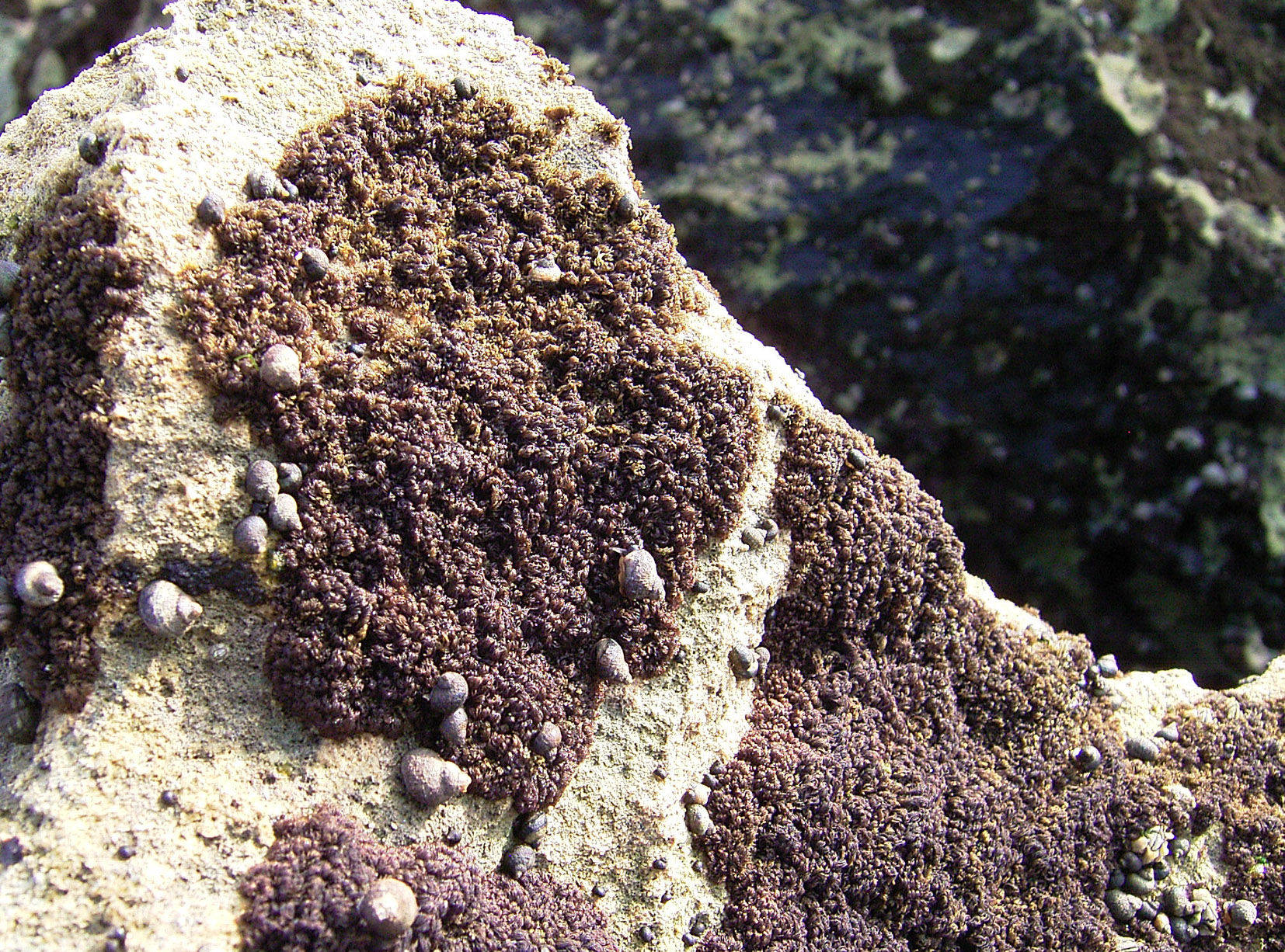
Bostrychia intricata, De Hoop.
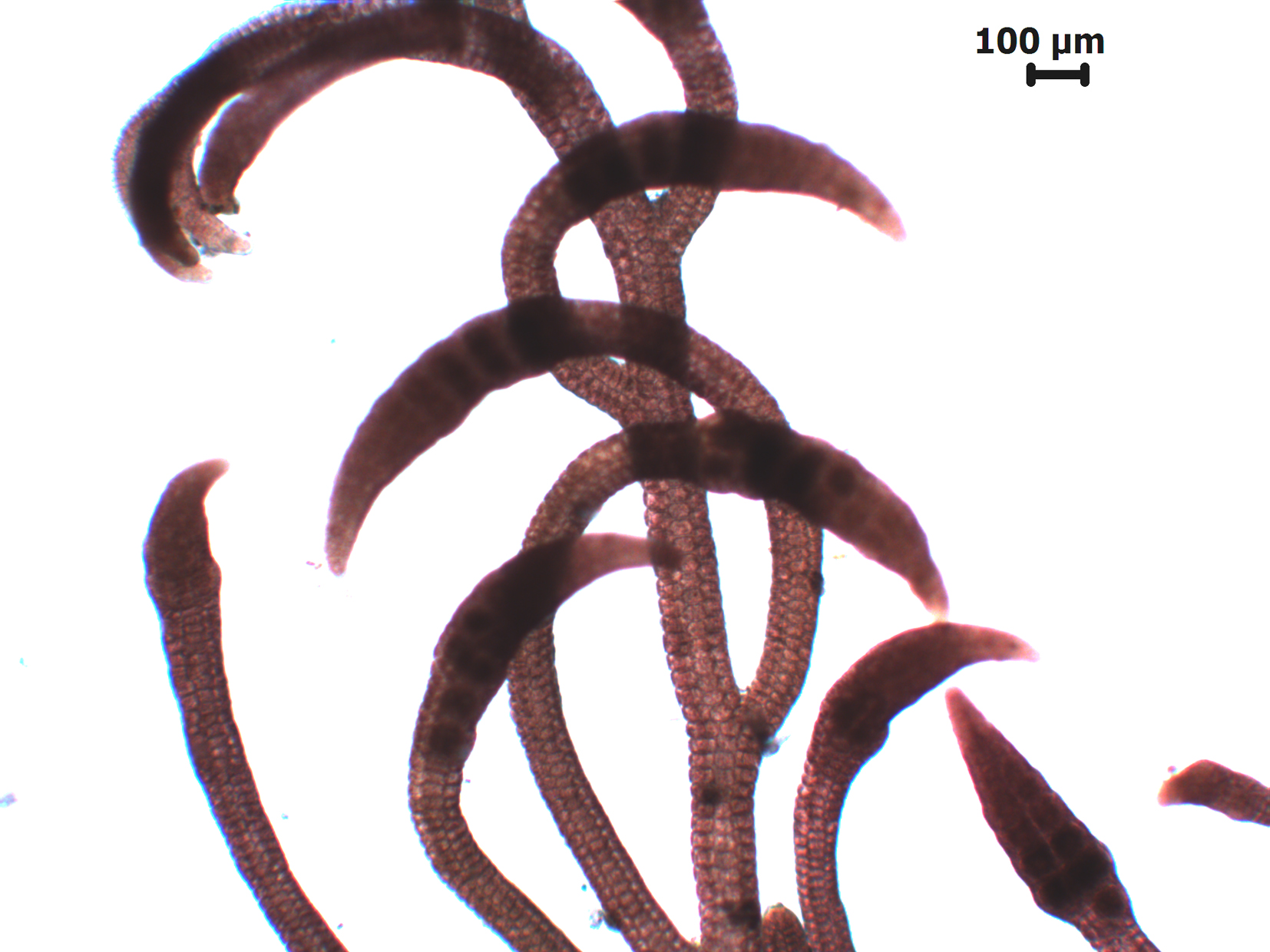
Bostrychia intricata, curved tetrasporangial stichidia.
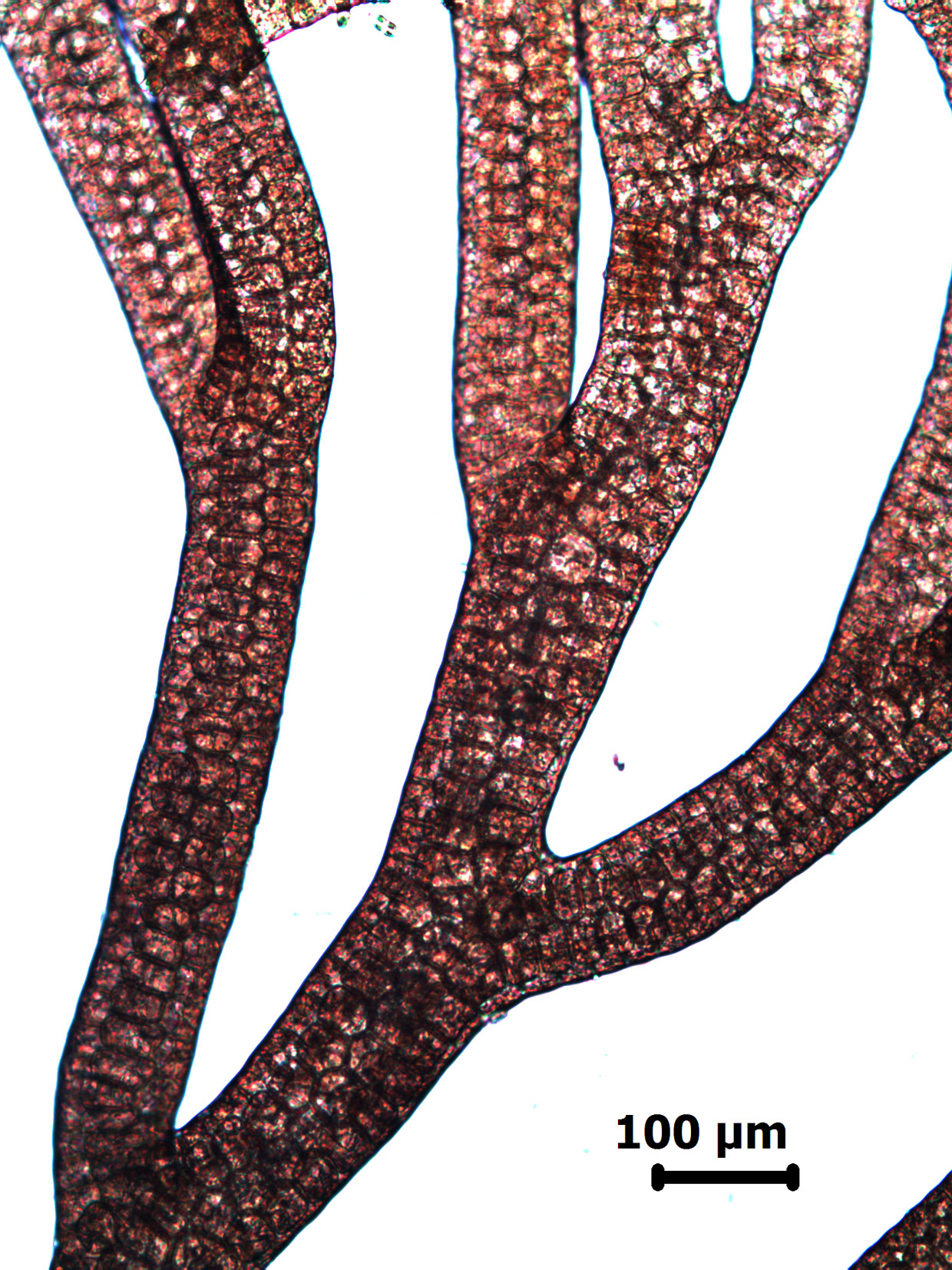
Bostrychia intricata, cells of fresh material.
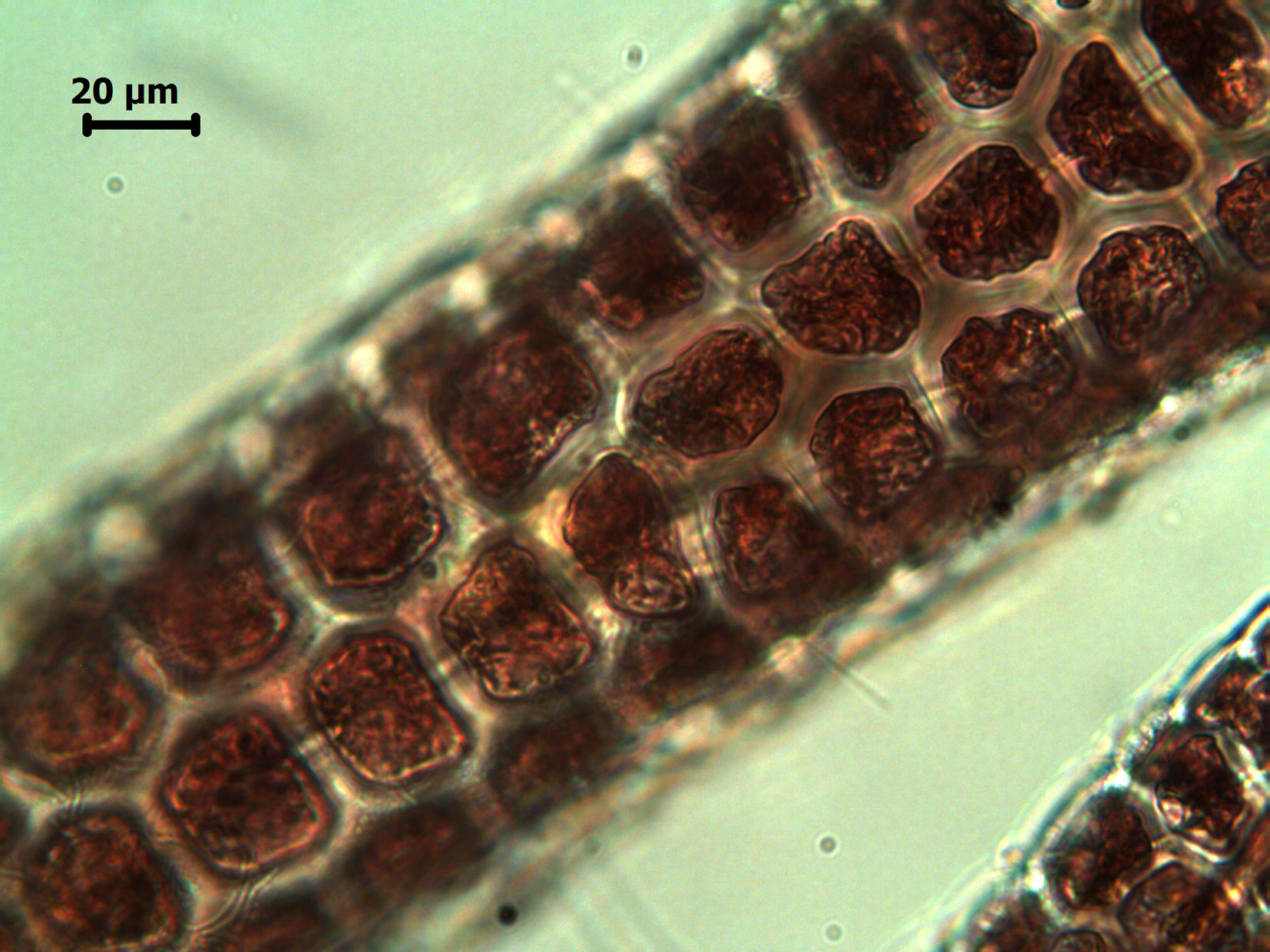
Bostrychia intricata, cell detail.
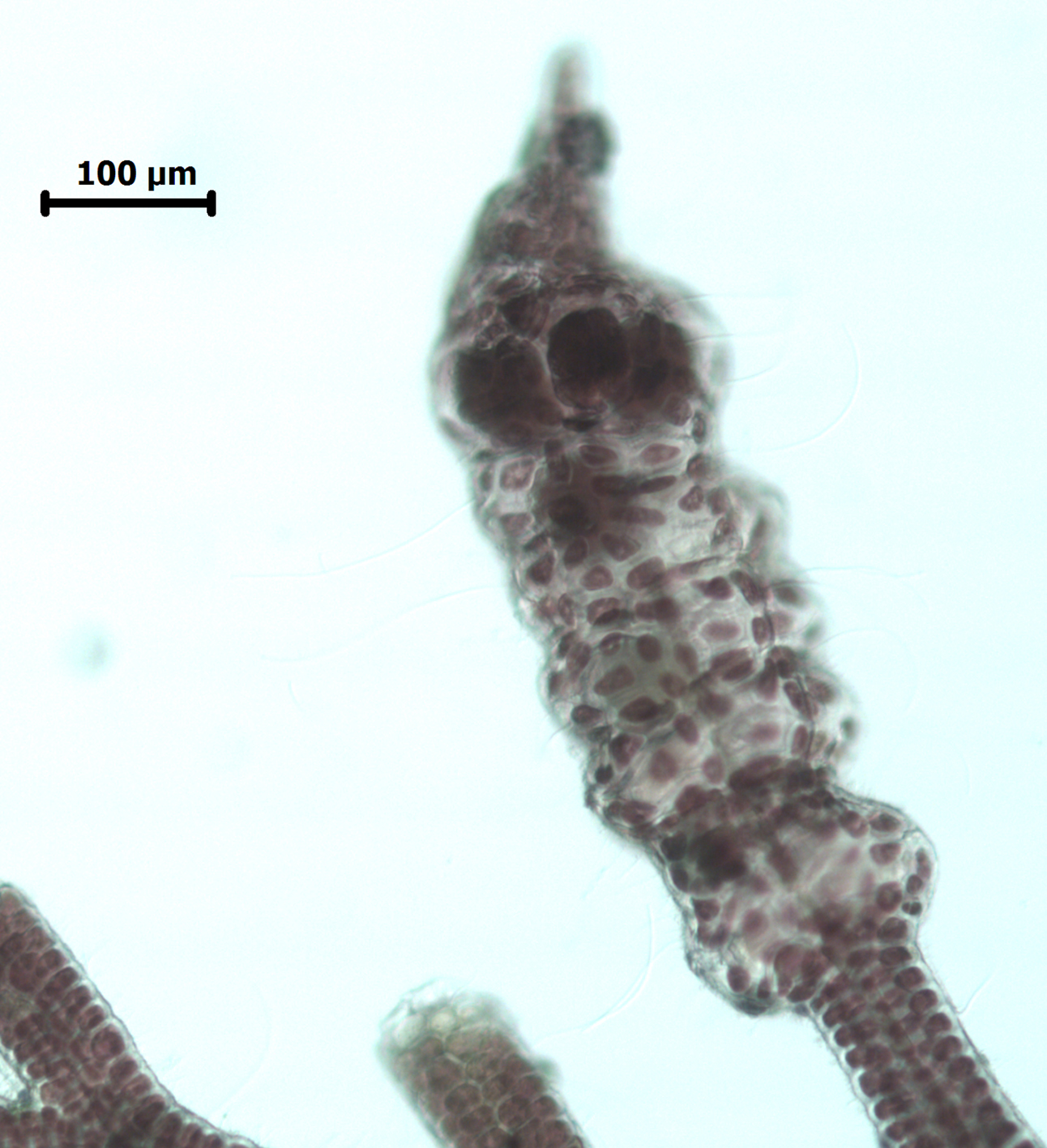
Bostrychia intricata, young tetrasporangial stichidium.
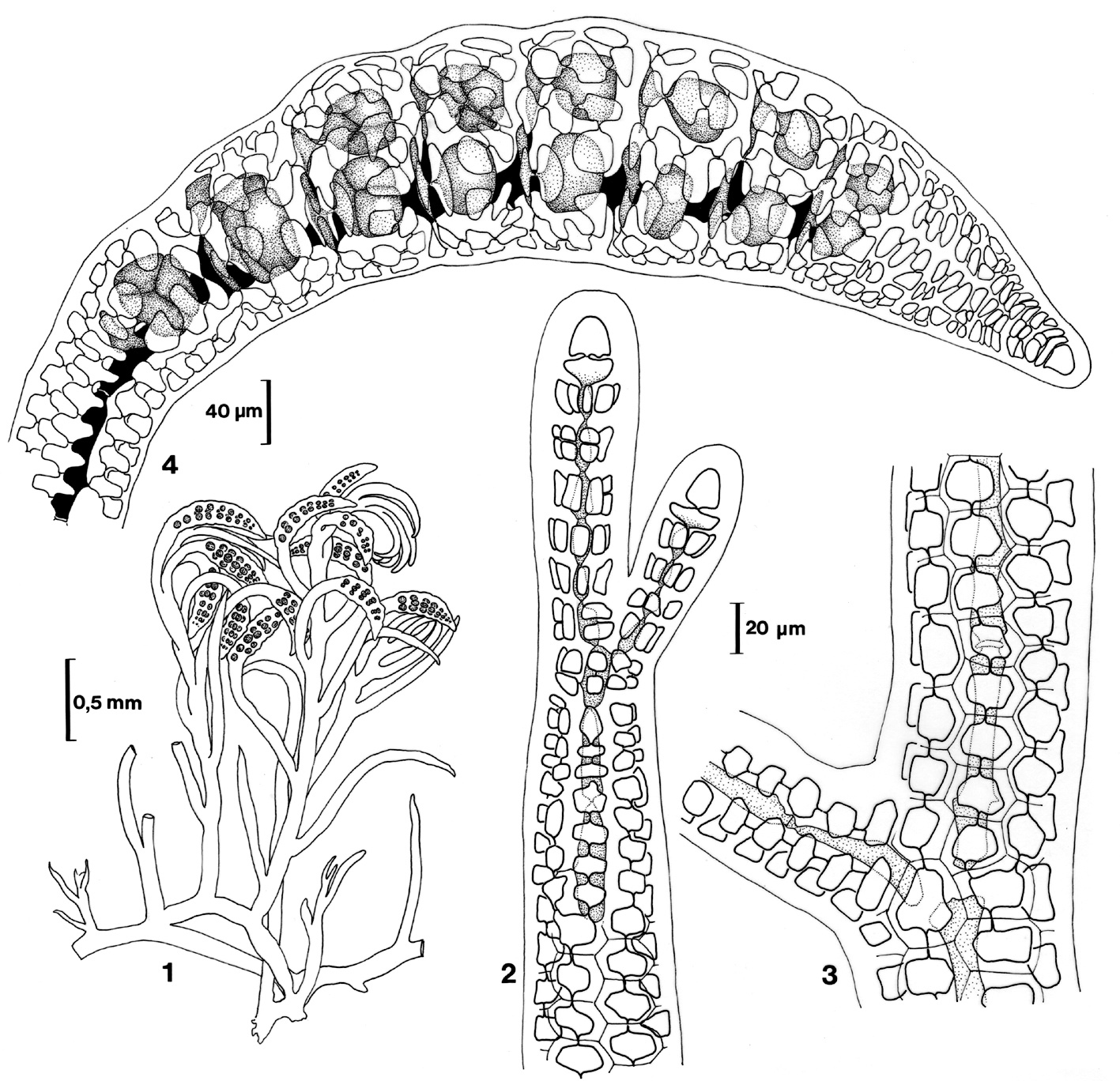
Bostrychia intricata. 1. Habit, tetrasporangial plant. 2. Thallus apex. 3. Detail, showing central cells and divided pericentral cells. 4. Tetrasporangial stichidium (central filament black). Reproduced from Stegenga et al. (1997).
References Bostrychia intricata
Guiry, M.D. & Guiry, G.M. 2010. AlgaeBase. World-wide electronic publication, National University of Ireland, Galway. http://www.algaebase.org; searched October 2010.
Lambert, G., T.D. Steinke & Y. Naidoo. 1987. Algae associated with mangroves in southern African estuaries. I. Rhodophyceae. South African Journal of Botany 53(5): 349-361.
Montagne, C. 1852. Diagnoses phycologicae, seu quibus characteribus, discriminandae sunt species lichenum algarumque nonnullae novae, in tomo Florae chilensis octavo nondum typis mandato descriptae. Annales des Sciences Naturelles, Botanique, sér. 3 18: 302-319.
Silva, P.C., Basson, P.W. & Moe, R.L. 1996. Catalogue of the benthic marine algae of the Indian Ocean. University of California Publications in Botany 79: 1-1259.
Stegenga, H., Bolton, J.J. & R. J. Anderson. 1997. Seaweeds of the South African west coast. Contributions from the Bolus Herbarium 18: 655 pp.
Cite this record as:
Anderson RJ, Stegenga H, Bolton JJ. 2016. Seaweeds of the South African South Coast.
World Wide Web electronic publication, University of Cape Town, http://southafrseaweeds.uct.ac.za; Accessed on 15 December 2025.